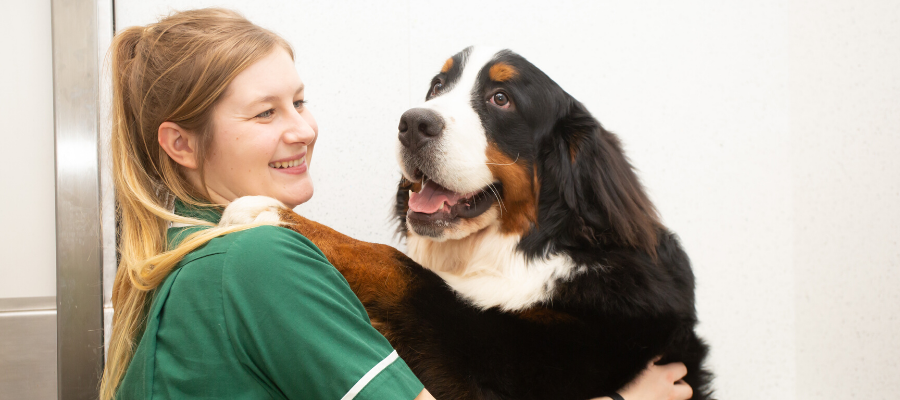 What is a mast cell tumour?
What is a mast cell tumour?
A mast cell tumour (MCT) is a type of malignant lump and is one of the most common types of skin cancer in dogs. The tumours can vary in size and presentation, they may appear as a small bump under the skin or as a larger, ulcerated, red lump. Mast cells are found throughout the body and are involved in allergic response, releasing a chemical called histamine. Histamine can cause inflammation, which is why some MCTs may appear swollen, itchy and irritated; this is also why lumps may change in appearance and size.
MCTs can vary in severity and are graded from 1 (low grade) to 3 (high grade). Low grade and most intermediate grade MCTs can be removed surgically and this is generally curative. In more aggressive, higher grade tumours it is more likely to have spread to other parts of the body. In these cases, further diagnostics may be needed to check how far the cancer may have spread. Surgery and treatment with chemotherapy or radiotherapy at a specialist oncology referral center may an option, though this is not always effective if the MCT has metastasised.
How is a mast cell tumour diagnosed?
We recommend having any lumps or bumps checked by your vet when you spot them. In order to make a diagnosis, your vet will take a small sample of cells from the lump via a “fine needle aspirate”, whereby a thin needle is inserted into the lump. This is a straightforward procedure which can be performed conscious during the consultation in most cases. The sample of cells is then sent to an external laboratory for cytological analysis by a pathologist. The pathologist will be able to report whether there are mast cells present in the sample, indicating a mast cell tumour. At this stage the pathologist can also suggest a potential grade of tumour.
What does surgery to remove a tumour involve?
Surgery is performed under general anaesthetic and patients will generally stay with us for just the day. When removing the mast cell tumour, the vet must ensure that a large enough margin around the lump is removed in order to completely remove all the cancerous cells. This means that the surgical wound will likely be much larger than the lump itself, particularly in higher grade tumours which will require wider margins.
The lump will then be sent for histological analysis by a pathologist at an external laboratory. This will confirm the grade of tumour and whether excision has been complete. In higher grade tumours, your vet may recommend further ‘staging’ of the MCT to determine if it has spread.
Fortunately, surgery is generally curative for most low and intermediate grade tumours.
What dogs are a risk of mast cell tumours?
Whilst dogs of any age and breed can develop a mast cell tumour, they are most common between the ages of 7-9 and in the following breeds:
- Beagle
- Boxer
- Boston Terrier
- Bulldog
- Cocker Spaniel
- Dachshund
- French Bulldog
- Golden Retriever
- Labrador
- Pug
- Shar Pei
- Staffordshire Bull Terrier
- Rhodesian Ridgeback
- Weimaraner
Can mast cell tumours be prevented?
There is nothing that can be done to prevent MCTs, bringing your dog to the vet to have any lumps checked is the best advice so that any MCT is detected and treated early.
Call us on 01435 864422 or book an appointment online if your dog has any lumps or bumps you would like checked.
Heathfield Vets – Quality Care With A Friendly Face

